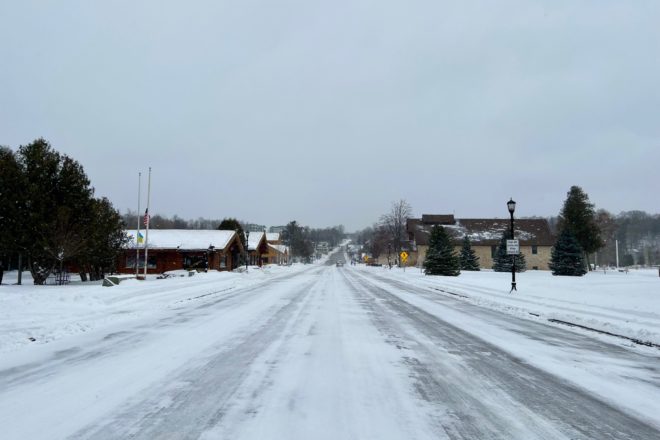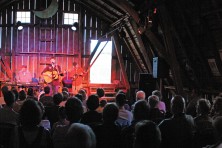Editor’s Note: What Winter Reveals
- Share
- Tweet
- Pin
- Share

“The soul of the county survives,” he told me, with a special emphasis on “soul,” hanging on it ever so much.
I was sitting in the Coop in the woods of Ellison Bay with the writer Norb Blei in September of 2012, several months before he died. I tucked into an old chair in the narrow space between stacks of papers, books and notes. He sat at his writing desk, thinner then, but not yet frail.
We were a couple of hours into a conversation about his career, his battles and his frustrations with the evolution of Door County, of which there were many. But he surprised me with an admission.
“I thought we would destroy this place,” he said, referring to the condominiums and gift shops. “I was wrong in some ways.”
Off the highways, outside the main drags in the village centers, he said, the core of this place still stood.
“The soul of the county survives.”
I think of that line often, particularly as I drive the back roads of the peninsula, winding myself down County Q to our office in Baileys Harbor. Or taking the long way home past Jim Ingwersen’s residence and gallery on Old Stage Road. Or meandering through the outskirts in Sevastopol, down roads traveled only by people with a particular place to go.
And I think of it in winter, when the crowds thin and most of the people here are those who have done the work to be here. You have to care to be here on a Tuesday in January. You have to care even more to be here on a Tuesday in late March. You have to work to make life here reward you in the winter.
Recently I thought of a wet December day, 20 years ago, down at the Teresa K. Hilander Ice Rink in Sister Bay. This was before there was a slab of concrete to flood to make ice. I swung over to help put up boards for a rink around a surface of sand in the grass. Rob Bussler, Billy Bonn and Mike Mead worked through the stack of sections of the rink wall assembled from 2x6s and 2x4s, replacing broken, loose or rotted wood. I wasn’t much use, other than to move stuff, which is the role of the young guys anyway. They salvaged as much as they could, all in hopes of a good, cold winter for skating and broomball and a rink full of friends and their families.
From my mid-20s vantage point, they seemed so much older (sorry, fellas). But I’m nearly 44 now, creeping dangerously close to the age they were as they resurrected the rink over a couple of days in the rain. It’s my generation’s turn to do that work, even if our bodies can’t take advantage of it the way they once could.
During the winter, the fun doesn’t come as easily. You don’t simply stroll to the beach. You need the gear, you need to think about it, you need to layer. You do things with purpose. You get creative. You build things, like an ice rink.
That day in his Coop, Norb was talking about the landscape and the roads that still reminded him of the peninsula he’d found 50 years earlier.
But I think of his words now when I think of Rob, Billy and Mike assembling the rink – putting in the work in hopes of creating a couple months of fun for the community.
You can still find that soul now. You’ll find it in the folks at the Sister Bay Historical Society during the Christkindlmarkt, the new fundraiser that not only adds an attraction to break up the December doldrums, but also provides funds to help the organization preserve the area’s history.
You’ll find it at Fish Creek’s Winter Festival, where local residents have been putting in the time for more than 30 years to put on a weekend to get out of the house, get weird and celebrate their town.
And in this issue, Brett Kosmider shows us some of those who go to extreme lengths to make more out of winter by snowkite, fat bike and paddle. Sam Watson tells the story of a young performer who’s finding an audience back home, and Grace Johnson talks to a homegrown author who’s finding her voice. Jacob Janssen shares a new vision for Sturgeon Bay theater, and John Mielke introduces us to a young couple finding artistry on the tip of a chainsaw.
The landscape may change (though hopefully not too much). But that’s OK. The soul of the county is more than rural scenes. It’s the people in them.
In these pages you’ll find that the soul of the county is as strong as ever, and it’s easiest to see in winter, when the clutter clears.
You just have to put in the work.


